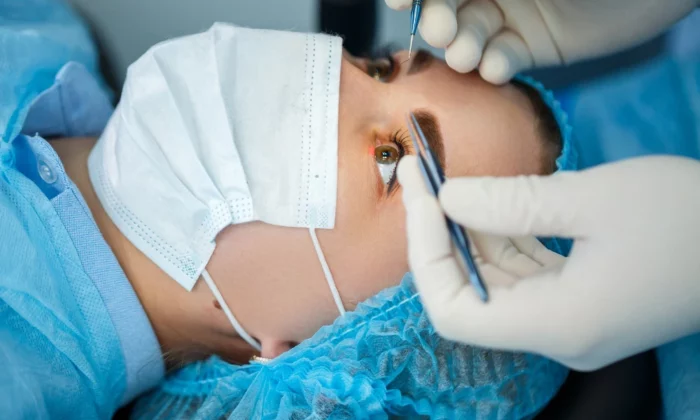Gone are the days when glasses or contact lenses were the only solutions to vision issues. Today, with the marvels of medical science, we have groundbreaking procedures like LASIK and PRK, offering a shot at perfect vision. But which one is better? While both aim to liberate you from the confines of eyewear, they boast unique techniques and outcomes. Dive into this guide to decipher the differences and benefits of LASIK vs PRK, and discover the ultimate path to crystal-clear vision tailored just for you.
Contents
LASIK: A Modern Approach to Vision Correction
LASIK, an acronym for Laser-Assisted In Situ Keratomileusis, has emerged as one of the most sought-after refractive surgeries in recent years. Introduced in the 1990s, this procedure has seen significant advancements, refining its techniques to offer unparalleled precision.
At its core, LASIK focuses on reshaping the cornea—the eye’s transparent front part. By doing so, it ensures that light entering the eye is accurately focused onto the retina, producing clear vision. Here’s how it works:
- Creating the Flap: The procedure starts with the creation of a thin flap on the cornea’s surface using a microkeratome or femtosecond laser.
- Reshaping the Cornea: Once the flap is gently lifted, an excimer laser is used to reshape the underlying corneal tissue. This laser is equipped to remove microscopic amounts of tissue with remarkable accuracy.
- Flap Repositioning: Post reshaping, the flap is laid back into its original position, adhering naturally without the need for stitches.
One of the standout features of LASIK is its rapid recovery. Most patients experience a dramatic improvement in vision within 24 hours, allowing them to enjoy life without the barriers of glasses or contact lenses almost immediately.
With its combination of speed, precision, and comfort, it’s no wonder LASIK has become the go-to choice for millions aiming for visual clarity.
PRK: A Different Technique with Unique Advantages
 Photorefractive Keratectomy, commonly known as PRK, stands as a pioneering technique in the realm of refractive surgeries. While it predates LASIK, it offers a distinct approach that sets it apart, often making it the procedure of choice for specific eye conditions.
Photorefractive Keratectomy, commonly known as PRK, stands as a pioneering technique in the realm of refractive surgeries. While it predates LASIK, it offers a distinct approach that sets it apart, often making it the procedure of choice for specific eye conditions.
Here’s a look at how PRK works:
- Surface Layer Removal: Unlike LASIK, PRK doesn’t involve creating a corneal flap. Instead, the procedure starts by gently removing the cornea’s outermost layer, called the epithelium, using an alcohol solution or a surgical instrument.
- Reshaping the Cornea: With the epithelium set aside, an excimer laser is employed to reshape the cornea’s surface, ensuring that light focuses accurately on the retina.
- Healing Process: Since the epithelium is removed, it regenerates over time. To aid the healing process, a soft contact lens is placed over the eye, acting as a protective bandage and ensuring comfort.
PRK’s unique approach offers a set of advantages:
- No Flap Creation: Since there’s no flap involved, PRK eliminates the potential complications associated with flap issues, making it a preferred option for those with concerns about LASIK’s flap.
- Thinner Corneas Welcome: For individuals with thinner corneas, PRK might be a safer bet since it preserves more of the corneal thickness.
- Active Lifestyle Suitability: Those involved in contact sports or activities with a high risk of eye injury might benefit from PRK, as there’s no flap that could potentially get dislodged.
While the initial recovery from PRK might be a tad slower than LASIK, with patients experiencing clearer vision typically within a few days to a week, the end results are comparable. The no-flap approach of PRK offers peace of mind to many, underlining its importance in the spectrum of vision correction surgeries.
Recovery Timelines: LASIK vs. PRK
When considering vision correction surgery, understanding the recovery timeline is crucial. Both LASIK and PRK offer transformative results, but their post-operative experiences can differ. Here’s a comparative breakdown of what you can expect after each surgery:
| Recovery Aspect | LASIK | PRK |
|---|---|---|
| Initial Vision Clarity | Almost immediate improvement. Most patients notice significantly clearer vision by the next day. | Gradual clarity emerges over several days as the epithelium heals. Vision can be hazy or blurry during this time. |
| Discomfort Level | Minimal. Patients might experience mild dryness or a sensation like having an eyelash in the eye for a few hours. | Moderate discomfort in the initial days, including sensitivity to light and a gritty sensation. |
| Return to Daily Activities | Can resume most daily tasks, like reading and computer work, within a day or two. Avoid rigorous activities for at least a week. | It’s advised to take a few days off work. Activities risking eye-contact, like swimming, should be avoided for up to two weeks. |
| Special Post-Op Measures | Post-operative check-up usually scheduled for the next day. | A bandage contact lens is placed after the procedure, typically worn for 3-5 days, to aid healing. Regular check-ups, especially in the first week, are crucial. |
| Overall Recovery Duration | Quick, with most patients feeling comfortable in a day or two. | Slower than LASIK, with complete comfort and vision clarity potentially taking up to a week or more. PRK’s no-flap approach reduces certain risks but extends the recovery timeline slightly. |
Remember, the choice between LASIK and PRK often boils down to individual preferences, specific eye conditions, and personal comfort levels. Both are proven procedures with high success rates.
Certainly! Here’s a comprehensive breakdown:
Potential Complications and Long-Term Results
 When considering LASIK or PRK, it’s vital to be aware of the potential side effects and the longevity of results. Both procedures have their own set of possible complications, although advancements in technology have significantly reduced these risks.
When considering LASIK or PRK, it’s vital to be aware of the potential side effects and the longevity of results. Both procedures have their own set of possible complications, although advancements in technology have significantly reduced these risks.
LASIK:
- Potential Complications:
- Flap complications: Issues like flap displacement or flap wrinkles can arise, although they are rare with the precision of modern techniques.
- Dry eyes: A temporary condition that might last for a few weeks. Artificial tears or prescribed eye drops can alleviate symptoms.
- Night vision issues: Some patients report halos, glare, or starbursts around lights during nighttime, but these usually subside as the eyes heal.
- Undercorrection or overcorrection: Less common with advanced LASIK, but in some cases, the laser might remove too much or too little tissue.
- Long-Term Results:
- Most patients achieve 20/20 vision or better.
- High patient satisfaction rate with the majority not needing corrective lenses post-surgery.
- Stable results, although age-related vision changes like presbyopia might still occur.
PRK:
- Potential Complications:
- Longer healing time: Since there’s no flap and the outer layer of the cornea needs to regenerate.
- Risk of infection: While rare, the open surface during healing can be more susceptible to infections.
- Haze: A cloudy appearance that might develop during the healing process. This is rare and typically treatable.
- Long-Term Results:
- Similar to LASIK, most PRK patients achieve 20/20 vision.
- No risk of flap-related complications.
- Results are stable, with similar age-related vision change considerations as LASIK.
In conclusion, both LASIK and PRK have evolved to provide safe, effective, and lasting solutions for vision correction. The right choice depends on the individual’s unique eye characteristics and their comfort with the recovery process. Always consult with an ophthalmologist to make an informed decision.
Cost Comparison: Is There a Clear Winner?
When contemplating LASIK and PRK, cost becomes a vital factor for many. While the ultimate goal is clearer vision, understanding the financial aspects can be crucial in making an informed decision. Both procedures have their own cost structure, influenced by several components.
| Factors | LASIK | PRK |
|---|---|---|
| Initial Costs | Standard: INR 10K-20K per eye, Special/Customized: INR 20K-50K per eye | INR 30K to INR 50K per eye |
| Additional Expenses | Fees for pre-operative consultations, post-operative care, or retreatments. | Similar costs for consultations and post-operative care. Extended recovery may add indirect costs. |
| Overall | Costs vary based on type of LASIK; quicker recovery might offset some indirect costs. | While direct costs are higher, consider potential extended recovery time and its economic implications. |
| Influencing Factors | – Location of the clinic – Surgeon’s experience – Technology used | – Location of the clinic – Surgeon’s experience – Complexity of the patient’s condition |
Conclusion
Choosing between LASIK and PRK is a decision influenced by various factors, from your eye condition to personal preferences. Both surgeries have proven to be effective in correcting vision, each with its unique set of advantages. What remains consistent is the allure of experiencing life without the constant dependence on glasses or contact lenses. Ready to embark on this transformative journey? Trust the expertise at EyeMantra. Experience unparalleled clarity and the freedom of clear vision with our top-notch LASIK surgery. Don’t wait any longer—book your free appointment now at 9711116605 and step closer to a world seen through a clearer lens.



